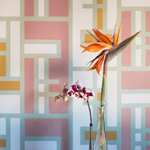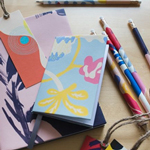Color psychology has many uses in different fields. For instance, it is widely used in marketing and branding as colors have been an important part of marketing. Colors are known to influence the emotions and perception of consumers to goods and services. In addition to these, studies have shown that colors play an important role in the behavior and mood of people as well as the growth and development of kids.

The importance of color psychology in interior design
Colors is the characteristic of human visual perception described through color categories such as red, blue, yellow, green, orange, or purple. Colors are perceived through the stimulation of receptor cells in the human eye called cone cells. Colors are associated with objects through the wavelength o the light that is reflected from them.
Can you imagine a world without color? Personally, it is difficult to describe colors to another person. However, the importance and uses can easily be defined and discussed. Colors create feelings and moods and these characteristics of colors are widely used in the field of construction and design.
Color is an element of light. Color has been known to create various moods and atmosphere in the home by evoking different emotions and feelings such as excitement, passion, serenity or mystery. That is why it is important to carefully pick the paint color or the wallpaper design you choose to decorate your home with. Understanding the principles and theories of color psychology, you will be able to create the right mood that you are seeking for.
The use of color psychology and color therapy in your rooms
Color psychology generally focuses on the effect of different colors to the behavior and mood of people. Studies have shown that colors have various impact to the general behavior of people. This is the main reason why color psychology is studied in interior design as color is an important element in making the home attractive and vibrant.
Color therapy, on the other hand, is a type of holistic healing that uses the visible spectrum of light and color to affect the mood and health of a person. Studies have shown that colors have an effect on people with brain or emotional disorders. For example, blue in general, has a calming effect that can lower blood pressure, whereas the color red has the opposite effect. Therefore it is highly recommended to carefully choose the color before using them in your rooms.
Using the color psychology chart to help in choosing the right color
Colors are widely used in the field of construction and design. The effects and importance of colors have been widely studied to successfully achieve the desired appearance of the room. When choosing the appropriate color for the room, the Psychology of color chart. This chart was developed by the Carey Jolliffe Graphic Arts agency and covers a wide spectrum of colors. It describes the positive effects of the different colors.
The color psychology of blue for a cooler room
Blue is one of the most popular colors and probably one of the favorite colors of many people. In general, blue is one of the cool colors that has calming effect to the mind and body. Blue is the color that is associated with peace, as it is also the color of calm sea and clear sky, which are both linked with inner serenity, calmness and clarity. With regards to the effect of blue to the body, studies have shown that the color can lower the heart rate as well as the blood pressure and breathing. As such, it is a good color to help in meditation and relaxation. The color is also ideal to be used in the bedroom to help one to have a deep slumber.
Using color psychology for children’s room
Researches have shown that colors have the ability to inspire, excite, soothe, heal and agitate a person. This is true with kids as well. Kids have been known to be extra sensitive to the effects of colors. Therefore, careful selection of colors for the room should be considered and must not be underestimated. Though not all kids will have the same response with colors, it is still helpful to know the effects of different colors to the behavior, growth and development of children.




